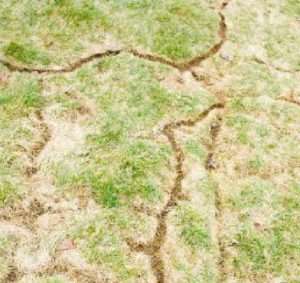Vole Control Tips to Maintain Your Yard and Gardens
Vole Control Tips to Maintain Your Yard and Gardens
Blog Article
Mastering Vole Insect Control: In-depth Insights on Infestation Avoidance and Treatment Techniques
By identifying the refined signs of vole infestation early on, we can take proactive steps to protect against prevalent damage. In this discussion, we will certainly discover the nuances of vole behavior, dig right into the identification of invasion indications, and reveal the most reliable avoidance and therapy techniques.
Understanding Vole Behavior
Analyzing the foraging patterns of voles uses beneficial insights right into their actions and habitat preferences. By observing their foraging habits, researchers can get a much better understanding of where voles prefer to establish their habitats and the extent of their ecological effect.
Research suggests that voles show careful feeding practices, liking seeds, bulbs, and roots. This nutritional choice affects their foraging patterns, leading them to locations abundant in plant life and ground cover. In addition, voles are understood to produce sophisticated passage systems for foraging and nesting functions, suggesting a high degree of flexibility to their surroundings.
Recognizing vole habits is important for implementing targeted bug control measures that disrupt their habitat preferences and foraging activities (vole yard damage). By examining their habits, experts can develop much more reliable avoidance and therapy approaches to manage vole problems

Identifying Indications of Vole Infestation
Vole problems can be discovered by identifying particular indicators of their existence in an area. One of the most usual indicators of a vole invasion is the presence of surface area runways.
Another crucial sign of vole invasion is the existence of little burrow openings in the ground. Voles dig shallow burrow systems with numerous entrances and exits. These burrows serve as sanctuary and nesting sites for the voles. Furthermore, voles are recognized to leave eaten plant stems, origins, and bulbs near their burrow openings, indicating their feeding task in the area.
Locating these droppings along runways or near burrow openings can verify a vole invasion. By being attentive for these indications, building proprietors can without delay attend to vole invasions and stop additional damage.
Carrying Out Proactive Avoidance Procedures

Furthermore, using natural vole deterrents like castor oil-based repellents or predator urine can function as reliable preventive steps. It is likewise advisable to consistently inspect outdoor spaces for any indications of vole task, such as runways or delve openings, to attend to potential invasions immediately. vole control. By adopting these aggressive avoidance methods, property owners can substantially reduce the chance of vole damages and preserve the health and aesthetic appeals of their landscapes
Effective Treatment Strategies
Integrating targeted trapping techniques and using approved rodenticides are important parts of effective treatment approaches for managing vole problems. Capturing can be a reliable way to lower vole populaces, specifically when put tactically in their active runways. Break traps and live traps can both be reliable, with the last enabling for the capture and relocation of voles. When making use of rodenticides, it is essential to adhere to security guidelines to avoid Continue damage to non-target animals and animals. Area rodenticides in protected bait terminals to minimize risks to unintentional targets. In addition, habitat modification, such as reducing ground cover and eliminating resources of food, can help prevent voles from infesting an area. Normal monitoring and maintenance are likewise vital aspects of successful therapy techniques to ensure that vole populations are kept under control. By integrating trapping, rodenticides, environment alteration, and consistent surveillance, reliable vole bug control can be achieved.
Tracking and Maintenance Tips
Preserving a systematic web timetable for tracking and carrying out routine maintenance tasks is crucial to sustain the performance of vole parasite control measures. Routine surveillance enables the early detection of vole activity, enabling prompt intervention prior to problems get worse. To efficiently check vole populations, tactically put traps can be used in vole paths or near burrow entryways. By consistently checking these traps, residential property proprietors can evaluate the extent of vole activity and adjust control techniques appropriately.
Additionally, keeping a neat and well-kept landscape is necessary in vole prevention. Cleaning away particles, such as piles of wood or dense plants, removes potential vole environments. On a regular basis trimming lawns and trimming vegetation helps in reducing vole hiding spots and minimizes their accessibility to food resources.
In addition, continuous maintenance of physical obstacles, such as fencings or cable mesh, is important to stop vole invasion. Evaluating and repairing any kind of damages to these structures ensures that vole control continues to be reliable in protecting residential or commercial properties from invasions. pop over to this site By incorporating these tracking and maintenance techniques into a comprehensive vole bug control strategy, people can properly manage vole populaces and protect their buildings from damage.
Verdict
To conclude, understanding vole parasite control requires a solid understanding of vole behavior, the ability to recognize indications of infestation, applying aggressive avoidance steps, effective therapy methods, and consistent surveillance and upkeep. By taking an extensive method to vole control, individuals can successfully handle and avoid problems, ultimately shielding their residential or commercial property and surrounding environment from damage brought on by these little rodents.
In this discussion, we will discover the subtleties of vole actions, dive right into the recognition of infestation indications, and discover the most reliable prevention and therapy techniques.Incorporating targeted trapping techniques and utilizing accepted rodenticides are crucial components of reliable treatment techniques for managing vole invasions. To effectively keep an eye on vole populaces, tactically put traps can be utilized in vole paths or near burrow entries. Inspecting and repairing any kind of problems to these structures makes sure that vole control remains effective in safeguarding residential or commercial properties from problems. By integrating these surveillance and upkeep methods right into an extensive vole bug control plan, people can effectively handle vole populaces and safeguard their residential or commercial properties from damages.
Report this page